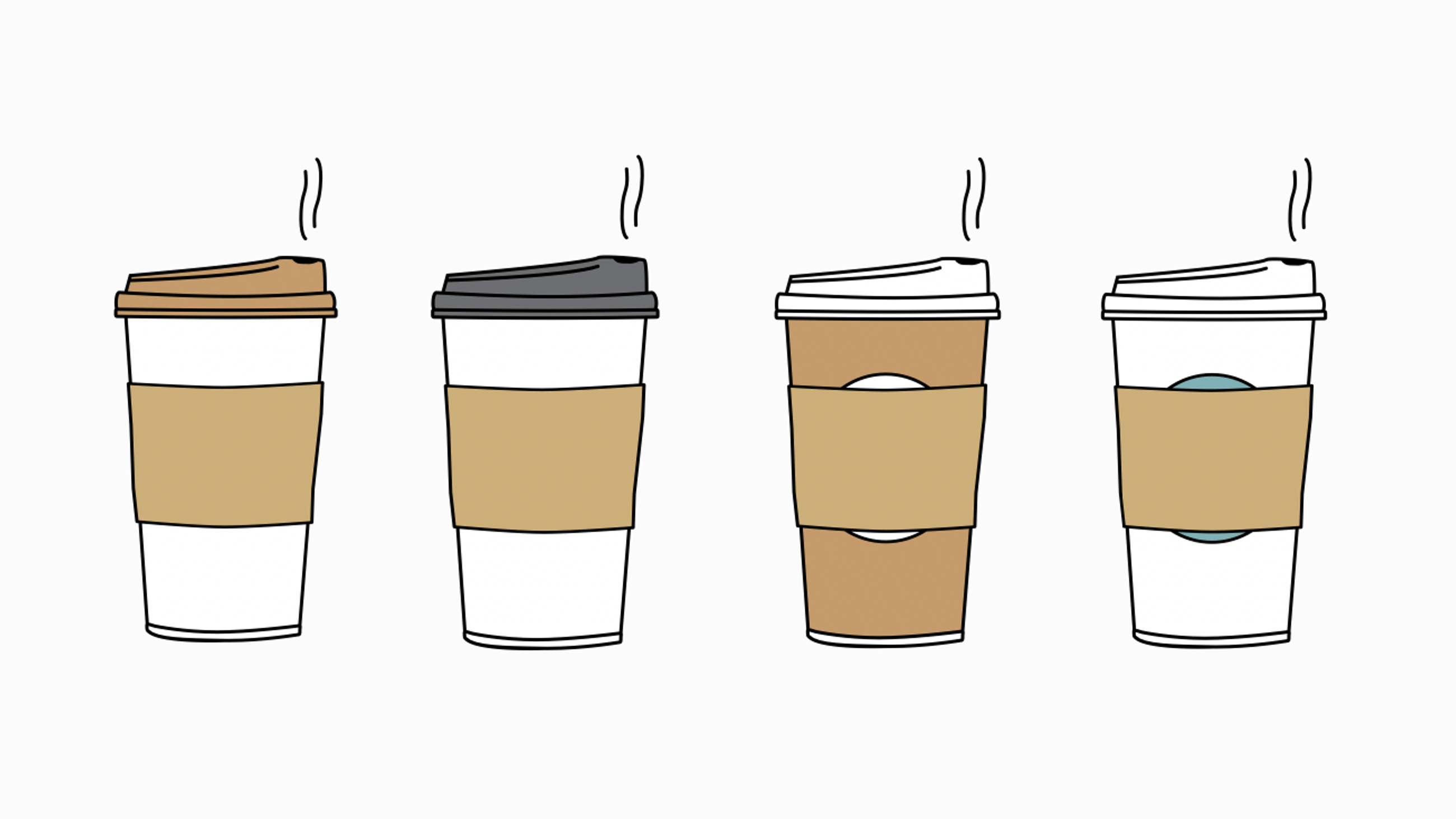Coffee talk: An interview with Coffee Association of Canada president Robert Carter
A year into the pandemic, Robert Carter stepped into the role of president of the Coffee Association of Canada, a not-for-profit trade group representing the industry, from importers and roasters to foodservice retail and related businesses.
That was March 2021, and the coffee industry was grappling with major disruptions reshaping consumer behaviour. Canadians were drinking just as much coffee as they had pre-pandemic; however, they were doing so at home, heavily impacting the out-of-home coffee market, including convenience operators who count on coffee sales to drive foot traffic and as a gateway to boost foodservice sales (especially during the morning daypart).
The CAC’s Canadian Coffee Drinking Trends Study reveals that in any given month, seven in 10 Canadians will have consumed a coffee in the past day, but as we enter the later months of 2021, out-of-home coffee consumption is still very much in recovery mode: The latest stats show 23% of respondents had a coffee prepared out-of-home the previous day compared to pre-pandemic levels of 40%.
A restaurant and foodservice expert with more than 20 years of industry experience, the new CAC president is helping the coffee industry chart recovery across all areas of its business. Carter sat down with CSCN to talk about how the convenience industry can be part of that solution by embracing quality coffee programs designed to engage customers and drive sales.
How has the pandemic changed away-from-home coffee consumption?
RC: Obviously with the restrictions, we saw a dramatic decline in out of home coffee consumption, particularly during the morning daypart, which accounts for 80% of away-from-home coffee consumption. People were just not commuting, going into work and out and about.
What kind of opportunities lie ahead right now?
RC: We're seeing a lot of signs of recovery. In fact, as people were getting back out, coffee was one of the first areas that started to see a bounce back, particularly with coffee drive-thru and on the off-premises access to coffee. Through our CAC research, we launched what we call waves to gauge consumers' sentiment on a number of different areas. We were constantly asking consumers what is it going to take for you to get back to your local coffee shop? Are you going to feel comfortable? And the results were positive in terms of consumers saying they were, one, looking forward to getting back to their local coffee shop, and two, that they were feeling safe to do so. Coffee's one of those highly habitual and ritual behaviours—that interruption was difficult for the segment, but consumers were eager to get back into it.
It’s an increasingly competitive market. Do you see convenience stores evolving their coffee programs and becoming key players?
RC: The convenience channel from a coffee standpoint in Canada has always been underdeveloped, particularly when you compare it to the advance of coffee in the U.S. convenience store channel. So, there's always been a strong opportunity for the convenience store to up the game and compete more aggressively with the quick service coffee channel overall. And the challenge for QSR coffee today is going to be that morning ritual. With working from home more, are customers going to get back into that morning routine? The dynamics are going to change in that regular routine of out-of-home coffee consumption and that’s where convenience stores can play a greater role.
The opportunities are for convenience stores to up their coffee game and then create that destination experience. You get a coffee, you get a snack, it's your afternoon break. Maybe when you take a walk around your neighbourhood or something like that?
RC: Exactly. And the additional opportunity is not only within the brewed coffee category but continuing to evolve into some of the more specialized coffee programs. C-stores obviously have a good selection of ready-to-drink through beverage fridges, but cold brew coffee is on fire right now. With some of these innovations, it’s an opportunity to up their coffee game.
How can convenience operators work with your members to benefit from introducing an in-house coffee program?
RC: A lot of the roasters offer good programs for c-stores and operators can work with the roasters to develop a customized program that touches on the different offerings, from brew to the specialty. It’s a simple way for a convenience store to get into the coffee game. The benefit for them is offering a product with high margins that really translates into a destination, giving consumers another reason to stop by the convenience store or gas station, as well as a point of difference compared to their competitors overall. Looking down to the U.S. and Europe, there’s some learnings that we can take from those markets to apply here in Canada.
For instance?
RC: Obviously the convenience factor is so important, but it's really around their quality and innovation. Gone are the days where you have a commodity-based coffee program where it's just there. You need to focus more on the quality play. You could talk about the origin of the coffee. There's so much more that you can use in your marketing arsenal that resonates well with consumers. And then pricing: I think a lot of the convenience and gas station stores look at it as just an inexpensive offering, which doesn’t necessarily have to be the strategy. You look at the QSR coffee players and their pricing strategies and think c-store and gas station stores can mirror that because we know that Canadians are willing to pay for quality. If you have a good quality product, you can charge a higher price point.
That's a win-win all around. What role do c-stores play in the success of your members?
RC: If you look at the number of units through the convenience store channel on the gas station store channel, coffee's percentage of the penetration through that channel is underrepresented compared to the distribution. There continues to be an opportunity for that channel to evolve and add coffee more aggressively to their offerings.
What trends are shaping the coffee category that you think our readers would want to know about?
RC: Overall coffee consumption when the pandemic hit did not decline, however there was a switch to the in-home versus out-of-home and there was an opportunity through the pods or ground roast. It's interesting that the convenience stores and the gas stations just don't really have that type of program. The in-home consumption is much stronger than it's been, and I think it'll continue. So, what role could a convenience store play to support in-home consumption? The second is the continued growth through innovation of coffee moving beyond the traditional brewed, to the nitro, the cold brew, espresso based, all the different types of sugary coffee beverages. There's a big opportunity to expand the program in the channel. C-stores and gas stations are well-known for frozen slushy drinks. How does coffee play into that? There’s the opportunity to focus on innovation through some of those different types of coffee, ice coffee beverages, based on the Starbucks model of expanding the scope of the coffee drinks. The reality is that a lot of Gen Z consumers are really getting into coffee beverages, so how can c-stores and gas stations capitalize on that? There's a lot of opportunity to be more creative and strategic than just having a very basic coffee program.
Do you have any advice or tips for operators when it comes to choosing a coffee program partner?
RC: The key is to get a partner who's going to take the time to help map out a successful program, look at best practices in different areas of the market and determine what that means to the individual convenience or gas station store operator. There's lots of great understanding of consumer behaviour and what that means for a coffee category. It’s important for operators to make sure that they're looking at this as more of a value add, and a point of difference to their business versus just selling coffee at 50 cents and putting it in the back corner. Working with a partner that can help identify and recognize that this is a good opportunity and provide that support is valuable.
Advocacy agenda
The CAC advocates on behalf of its membership regarding government policy and regulations. Carter highlights three areas of focus:
1. The CAC has a strong mandate around making sure from a health and wellness standpoint, that we continue to promote the benefits of coffee and we work with the government, particularly Health Canada, on some of those initiatives around the health benefits of coffee.
2. The sustainability aspect of coffee is huge. We’re working very collaboratively with the associations from a global standpoint, to create a strategic mandate that we're understanding and supporting some of the initiatives from origin countries around fair wage for workers and sustainability from an environmental standpoint to make sure that there is a viable coffee industry for future generations overall.
3. Packaging plays an important role in the coffee ecosystem on a number of different fronts. We are working very closely with Canadian Plastics Pact and local governments on the new mandate and the overall packaging concerns on an ongoing basis.

This interview originally appeared in the November/December 2021 issue of Convenience Store News Canada.



